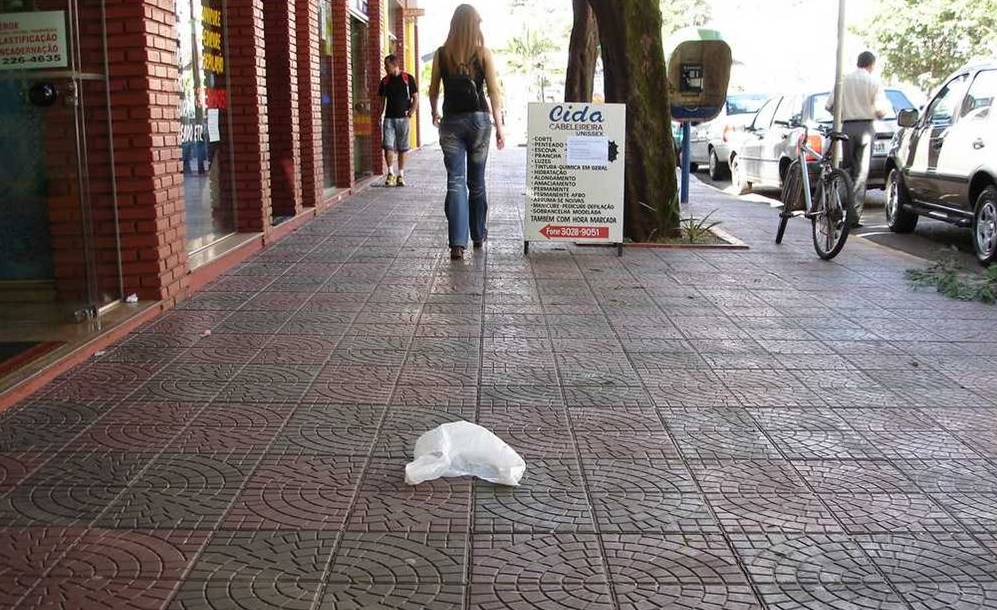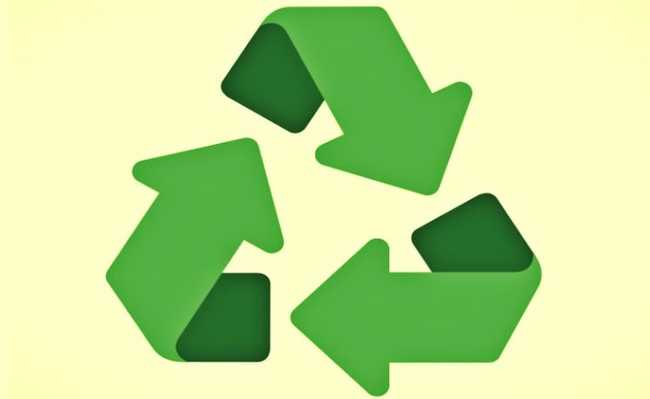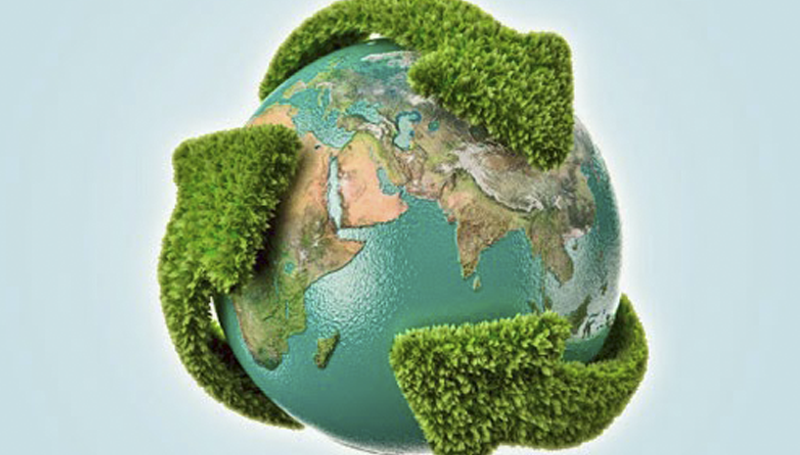Entrevista concedida pela FUNVERDE para a revista HM! sobre as malditas sacolas plásticas de uso…
O Futuro dos Plásticos – Existe uma solução para este grande problema de gestão de resíduos?

O Plástico, que se tornou a pedra angular no nosso estilo de vida moderna, é um dos mais desafiadores problemas mundiais de gestão de resíduos.
Tão benéfico de inúmeras maneiras, este material quase indestrutível é lixo no nosso ambiente, tanto na terra ou no mar. Difíceis de reciclar como resíduos pós-consumo, e de difícil degradação, o plástico em suas diversas formas tornou-se um grave problema ambiental.
Mas as soluções podem estar à vista.
Muita pesquisa está em andamento em todo o mundo para desenvolver plásticos que são biodegradáveis e têm impactos ambientais muito menores. Uma corrente de pesquisa se concentra em bioplásticos, compostos de plástico derivados em grande parte de fontes de biomassa, misturado com materiais à base de petróleo em alguns casos.
Uma linha mais recente de pesquisa centra-se nos oxibiodegradáveis (plásticos oxi-bios).
Vantagens do plástico oxibiodegradável
A excelente vantagem ecológica do oxibio é a sua vida útil controlada e capacidade para degradar completamente, de forma automática e em condições aeróbicas, mesmo se não for recolhido, e sem deixar resíduos. O Oxigênio é necessário para a degradação completa, que pode ocorrer em terra ou na água.
Plásticos oxibiodegradáveis são feitos de nafta, um subproduto do refino de petróleo, que costumava ser queimado para a atmosfera como um poluente agregado.
Nenhuma quantidade extra de petróleo precisa ser refinada para a produção dos oxibios, evitando assim, a poluição adicional e a depleção do petróleo.
Em comparação com os bioplásticos de origem renovável, as embalagens de plástico oxibio são mais baratas e menos Carbono é emitido na sua produção.
Embora a primeira prioridade seja resolver o problema do plástico que fica abandonado no meio ambiente e não pode realisticamente ser recolhido para a sua eliminação, os oxibios são compostáveis em instalações apropriadas para os mais recentes padrões da UE.
Enquanto os bioplásticos baseados em amido contaminam os sistemas de reciclagem existentes ao ser misturado com plástico convencional, os oxibios não vão fazer mal algum aos sistemas de reciclagem.
Produção de oxibios
O aditivo oxibiodegradável altera a estrutura molecular do plástico convencional, tornando-o oxibiodegradável. Como o aditivo é introduzido no plástico durante a fase de extrusão na produção, não existe qualquer necessidade de alterar ou reequipar extensivamente os sistemas de produção já existentes.
Um sal metálico de transição contido no aditivo funciona como catalisador, mas pode levar a degradação prematura quando expostos ao calor. Para evitar isso, são introduzidos estabilizadores especiais que protegem o catalisador durante o processamento, mas permitem que a degradação ocorra ao final da vida útil do produto.
A habilidade de equilibrar catalisadores e estabilizadores na formulação dos aditivos oxibio é uma especialidade exigida uma vez que estes estabilizadores têm que ser apropriados para as temperaturas de processamento e especificações das matérias-primas, mas também adequado para o prazo de validade previsto do produto acabado.
Oxibiodegradação
A oxidação é o processo de degradação inicial. Ele reduz o seu peso molecular abaixo de 40.000 Daltons de modo que o material deixa de ser um material plástico e se torna biodegradável, como uma folha de árvore.
Os resíduos da degradação são convertidos em substâncias não tóxicas, tais como ácidos carboxílicos, aldeídos e cetonas, que não prejudicam o meio ambiente. Os sais metálicos usados nos aditivos são oligo elementos, necessários para a vida saudável de plantas e animais, não existindo a presença de metais pesados.
Se enterrado num aterro, oxibios vão ainda degradar enquanto existir oxigênio disponível. Sem oxigênio, os oxibios permanecem inertes, sem emitir metano, em contraste com outros plásticos degradáveis.
Normas técnicas e de segurança
Para ser classificado como um plástico oxibiodegradável, o produto tem de cumprir a norma americana ASTM D6954 ou a norma britânica BS 8472 para a oxibiodegradação do resíduo plástico no meio ambiente. Além disso, os testes de ecotoxicidade na EN 13432 e ASTM D6954 confirmam a não liberação resíduos tóxicos, e as exigências dos EUA e UE para contato direto com alimentos têm de ser atendidas.
“Se os resíduos de plástico flutuando no Pacífico – o chamado Pacific Garbage Patch – tivessem sido fabricados com plástico oxibiodegradável, a maioria já teria degradado e não haveria ‘mancha de lixo'”. Professor Gerald Scott, Diretor Conselheiro Científico para a Oxobiodegradable Plastics Association
Prova da eficácia
Em fevereiro de 2011, a Agência Ambiental do Reino Unido publicou um relatório de Avaliação do Ciclo de Vida (ACV), mostrando que as sacolas plásticas comuns e as oxibio tiveram um resultado melhor do que as de papel ou as compostáveis (plástico baseados em amido).
Assim como, um estudo científico, comprovando a biodegradabilidade, a não ecotoxicidade e a reciclagem dos oxibios foi apresentado pela Plastics Federation para o Governo do Reino Unido em 2011.
A oferta cada vez maior de informações sobre os benefícios ecológicos do oxibios já levou a um maior interesse nos produtos.
Em particular, os países em desenvolvimento, onde as grandes quantidades de resíduos plásticos nas praias, nos rios, nas florestas e nos oceanos são impossíveis de efetivamente serem coletados, têm aumentado o uso de oxibios e alguns países já legislam para torná-lo obrigatório.
Os oxibios tem a chance de se tornar o plástico do futuro, especialmente se os peritos continuarem a melhorará-los, ressaltando suas vantagens – a vida útil controlado e biodegradação completa, sem deixar resíduos tóxicos – que pode ser de grande valia na luta global contra o grande problema da gestão de resíduos de plástico.
Mais informações também podem ser encontradas on-line no website da Oxobiodegradable Plastics Association http://www.biodeg.org
Fonte – Pia Hachulla, GLOBE-Net, May 8, 2013
Abaixo, a matéria original.
New research may solve the problem of plastic wastes
Plastic – it is an indispensable part of our everyday lives and an almost indestructible part of the garbage that daily ends up in our landfills, incinerators, junk yards, in our rivers or oceans, or in the bellies of fish or animals that form part of our food chain.
Every year, over 260 million tonnes of plastic are produced globally. That is equivalent to about 5 times the structural steelwork of the Empire State Building.
The plastic waste issue is so much more than having to deal with disposable shopping bags. When one considers how much plastic is used in our houses, our vehicles, our hospitals and universities, and in consumer goods packaging, the scale of the problem becomes more apparent.
All these plastics are essential, and all present a waste management challenge that is getting larger every day. Only a quarter of this plastic is recycled and even then, it remains as a waste management problem. So far, technology has not provided a reasonable alternative, at least on a scale that comes anywhere near the rates at which we produce, use and throw away conventional plastics.
That might be changing. Research on many forms of bio-plastic, i.e. plastics that are naturally biodegradable or even carbon positive may be the beginning of a possible solution for the problem of plastic waste.
When one considers how much plastic is used in our houses, our vehicles, our hospitals and universities, and in consumer goods packaging, the true scale of the problem becomes more apparent.
What is bio-plastic?
Bio-plastics are ‘bio-based’ which simply means that the plastic is produced by using renewable plants or biomass instead of oil, but this does not indicate simultaneously that these products are easier to recycle or even biodegradable or compostable.
In its simplest form, bio-plastics are materials composed largely of substances derived from biomass. There are several types of plastics that can be derived from renewable biomass sources. Some use sugar cane as their basic building blocks instead of fossil fuels to produce polyethylene (PE), the most common plastic mainly used in packaging.
Another type of bio-plastic consists of polylactic acid (PLA), based on sugar cane, glucose or corn starch. PLA, a transparent plastic which generally comes in the form of granulates, is widely used in the plastic processing industry for the production of foils, drinking cups and disposable bottles.
Some bio-plastics are biodegradable, which means they will break down in the presence of naturally occurring microorganisms over a period of time.
The degree of biodegradation varies with temperature, polymer stability and available oxygen content. Unfortunately, this means that most bio-plastic won’t biodegrade in a consumers’ compost. Tightly controlled conditions of industrial composting units are required in most cases.
Most other types of plastics will also eventually biodegrade when in contact with oxygen and ultraviolet radiation. This process, however, takes years and usually involves the release of toxic chemicals. They may also be compostable which means that they can biodegrade in a municipal or commercial compost facility, usually within 180 days. While composting, they produce carbon dioxide, water and humus.
The Benefits of bio-plastic
One of the benefits of using bio-plastic is the reduction of carbon emissions. Each pound of plastic made from oil releases about 6 kilos of carbon dioxide to the atmosphere. Conversely every kilo of bio-plastic produced can absorb from 2 to 2.5 kilos of carbon dioxide due to photosynthesis of the agricultural products used in its composition.
The ability to recycle or biodegrade bio-plastics may also be advantageous for reducing the accumulation of plastic waste in landfills and in the ocean.
The production of bio-plastic is said to require 65% less energy than the production of petroleum-based plastic, though this is disputed by many leading experts. Energy efficiency and less dependency on fossil fuels is another important benefit.
This would be a big step forward in mitigating the global warming and reducing the accumulation of plastic waste in landfills. But there are still some enormous challenges to overcome.
Challenges
Although the supposed benefits of bio-plastic seem to be helpful in addressing the huge problem of plastic waste management, there are other concerns that cannot be ignored.
The term bio-plastic does not automatically mean that this product is good for the environment. It is still a plastic that has to be produced and, at best, recycled at the end of its life. Some of the same problems associated with conventional plastic exist also with bio-plastic.
As with conventional plastic, bio-plastics do affect the environment due to the concentration of toxic elements that are part of their manufacturing.
Huge amounts of plastic waste that cannot be recycled end up in our oceans, harming marine species. The plastic breaks up into very small particles and often leads to diseases and death of fish and marine birds as plastic fills their stomachs.
This also represents a risk of accumulated toxins in the food chain that may lead to severe human health risks. Bio-plastic ending up in our oceans will have the same effect as conventional plastic – avoiding this still presents a major challenge to overcome.
A step forward would be a guaranteed recycling or controlled biodegradation treatment. But recycling and biodegradation of bio-plastics represent further challenges as different kinds of bio-plastics require different treatments and not every kind of bio-plastic is fully biodegradable.
Bio-plastic ending up in our oceans will have the same effect as conventional plastic – avoiding this still presents a major challenge to overcome.
Oxo-biodegradable plastic may be the answer.
Oxo-biodegradable plastic is a plastic with a controllable lifespan, which degrades completely without leaving any traces or noxious residues behind. It does not just fragment into particles of plastic.
During biodegradation, the oxo-biodegradable additive breaks down the molecular structure of the plastic so that by the time it has started biodegrading it has ceased to be a plastic. Instead, it has become a material that is biodegradable in much the same way as a leaf or twig is changed into water, CO2 and biomass.
For this reason, it is increasingly being used in countries concerned about plastic pollution for agricultural and horticultural applications. Its use is now mandatory in some countries, e.g. the UAE and Pakistan.
Waste management of bio-plastic
Compared to oxo-biodegradable plastics which can be safely recycled with conventional plastic, bio-plastics represent an even greater challenge in terms of waste management.
Mixing bio-plastics with conventional PE can be harmful to the existing recycling infrastructure because both types cannot be recycled the same way. Once mixed, recycling infrastructure can be contaminated and the PE will cease to be recyclable.
But identifying the difference between bio-plastics and conventional plastics is not easy for consumers and may lead to increasing costs for waste management companies to first sort the waste.
Not being recycled or biodegraded by any of these treatments, bio-plastic will end up at a landfill or in waterways with the conventional plastic where it will not degrade any faster and may even generate methane.
For bio-plastics, new composting programs and recycling infrastructures would be required to ensure adequate waste management, eliminating the risk of just more plastic being accumulated at landfills and in our oceans.
Will bio-plastics serve as an alternative to conventional plastic?
It is questionable whether bio-plastics will be able to reduce the huge waste management problem we face today. But there remain many challenges that must be addressed first to make bio-plastics a better option to conventional plastic.
To become a real improvement to existing plastics, bio-plastics would have to be non-toxic and entirely biodegradable, which implies the existence of new biodegradation infrastructures.
To date, the production of bio-plastics is more expensive than that of conventional plastic, leading to a price difference between 20 to 100 percent.
Bio-plastics could never be produced in quantities to match the 265 million tonnes of conventional plastic which the world is currently using, and they therefore are not a realistic solution to plastic waste problem. Reaching the goal of being competitive with conventional plastic will be a long way to go, but we should not stop focussing on the benefits of bio-plastics and working on overcoming the challenges.
Every step towards a possible solution for the problem of plastic waste management is valuable and should be taken seriously as this problem will be with us for many more years.
To date, the production of bio-plastics is more expensive than that of conventional plastic, leading to a price difference between 20 to 100 percent.
The Future of Global Food Security will be a major topic at GLOBE 2014, the next in the celebrated GLOBE Series Conferences on the business of the environment taking place in Vancouver Canada, March 26-28, 2014. Reserve your place now. Check here for more details.
Fonte – Boletim dos Instituto IDEAIS de 18 de junho de 2013
Instituto Ideais
Visite o site www.i-ideais.org.br
Siga no Twitter twitter.com/InfoIdeais
Siga no Facebook www.facebook.com/pages/Instituto-Ideais
Entre em contato por Email info@i-ideais.org.br
Ou por telefone + 55 (19) 3327 3524





Este Post tem 0 Comentários